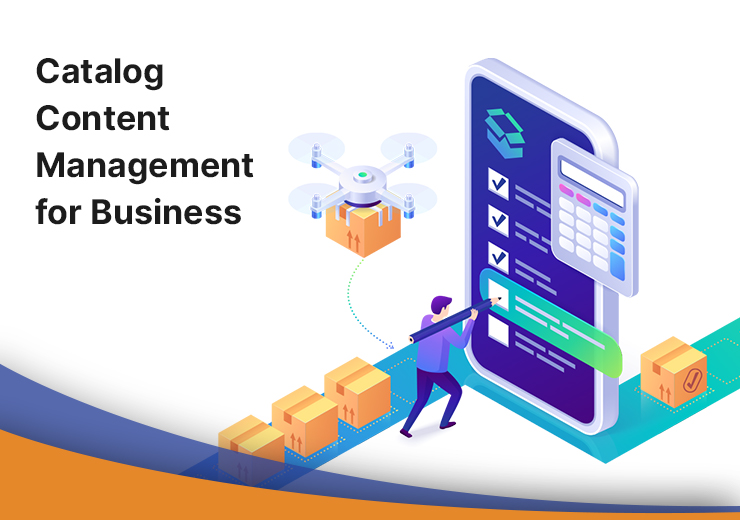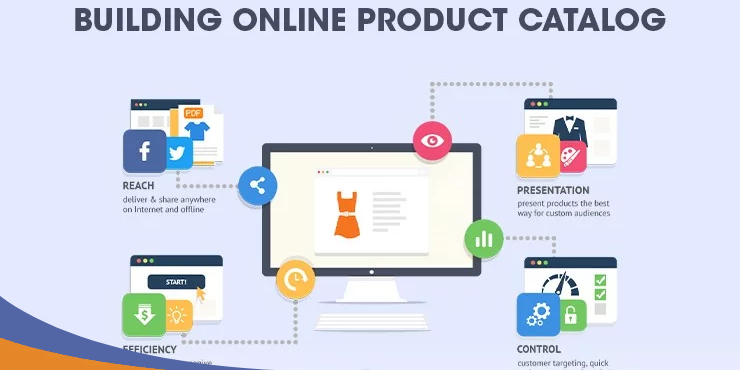
The battle for brand supremacy used to be fought in brick-and-mortar stores in the past but now it is fought in online stores and websites. As a business owner, you will need to carve out a portion of the online space as yours.
This is one of the reasons you need Catalog Content Management (CCM). It might sound like a very complex term used by large corporations but it is a process that even small businesses need.
Procurement is something every seller has to deal with. The scope of factors to consider when making procurements might dwarf a small to midsize business. After all, these businesses are sharing the same space with large corporations that have departments specifically for procurement.
Catalog content management makes procurement more manageable and less chaotic. It isn’t a process just kept for big companies who can afford it. It is the core of e-procurement.
The aim of having a business is to provide a service or sell a product. Ensuring the services and products are available is one of the major functions of catalog content management.
What is Catalog Content Management?
Catalog Content Management in relation to eCommerce, is a set of processes aimed at ensuring a collection of information is organized and efficient in its function.
It can also be seen as a functional way for industries to pool data together making purchases easier for their clients and making it easier also to keep track of what they have and what they don’t have.
The definition might make it look like catalog content management is only for big corporations but it is for all merchants who have or deal with customers. So small to medium businesses need catalog content management.
Before there was catalog content management, there was master data management. You can call it the predecessor of catalog content management.
Master Data Management was a tool or combination of tools aimed at assembling information and getting rid of duplicates. The difference between master data management and catalog content management is that the former was very limited as a content management system.
The scope of catalog content management includes the functions of master data management with many other functions. The room for expansion in its function has only just begun.
How Catalog Content Management Services Provided by Vserve, Will Save Your Business
We have established the meaning of catalog content management including its predecessor but how will it save a business from being mediocre and forgotten in the ocean that is eCommerce space?
Below are 8 ways catalog content management services will save your business.
1. It Improves Branding
Catalog content management improves branding and that is a fact.
A shocking stat about branding is that 73% of customers prefer a company that personalizes their shopping experience. And one of the growing functions of catalog content management is that it can make it easier for businesses to provide specialized catalogs of goods which improves a customer’s shopping experience.
If this is done many times enough by a seller, a reputation forms, and then the reputation gradually gets attached to the brand.
2. It Increases the Rate of Conversion
In the eCommerce space, catalog content management systems become the directors working behind the scene to create what the customer sees.
Customers love organized online stores that provide the right information on various products and services. The only way a seller can consistently provide such high-quality information is by using catalog content management tools.
Customers that see this level of efficiency are more likely to convert from basic website visitors to purchasing customers. This is because they have all the information they need to make a purchasing decision.
3. It Enhances the User Experience
From a customer’s perspective, navigating an online store that is organized is one of the first great impressions they will get. It becomes easier to find what you are looking for.
81% of customers conduct research online before making a purchase. The thing to take away from this is that they will gravitate more to the online store that gives them the most robust information they need.
Catalog content management will ensure the information on the page is organized, accurate, relevant, and presented in the correct format. All these things combined will give the customers who visit the site a great user experience.
4. It Increases Return Rates
This benefit is related to a good customer experience. Most customers that find exactly what they are looking for at a store and get all the information they require will return to make another purchase.
While new customers are important and are great for growth, returning customers are what maintain sales. After all, there is a 70% chance that a returning customer will make a purchase versus the 20% chance that a new customer will make a purchase.
An organized catalog will make a customer return because they trust the information being shown on the website. Catalog content management will make all this possible.
5. It Grows Business Partnerships
Catalog content management improves the relationships between retailers, wholesalers, and even manufacturers. If the suppliers of a particular product a seller sells use content management systems, they will be making e-procurement easier for their clients.
The retailers will learn to depend on these catalog content management systems making them loyal to their suppliers.
With a well-organized catalog, purchases become easier as the number of products and other details is readily available.
This will improve the relationship between suppliers and retailers leading to better business partnerships.
6. It Improves the Flow of Information
The eCommerce space has grown so much from the early days that it is unrecognizable from that time.
Alibaba started in 1999 with about $25 billion in funding but in 2021 was worth $165.39 billion. This is just a single example of the growth eCommerce brings.
The shocking truth is that it hasn’t even plateaued. There is still growth going on and growth brings change.
It is only with catalog content management that a retailer can keep up with the constant change of the eCommerce space.
There is no way to constantly be updated with the information from your retailers and input that feedback into your store manually. But that is one of the functions of a catalog content management system.
7. It Makes Order Processing Easier
A very vital part of eCommerce is order processing. This involves getting an order from a customer, packing the product, and shipping it. Order processing doesn’t end until the customer has gotten what was ordered.
Catalog content management ensures makes this process easier in two ways:
- It organizes the storefront making it easier for a customer to place an order after receiving sufficient information on the product.
- It helps the retailer organize inventory and speeds up the order processing portion of the business.
8. It Increases Traffic
63% of those considering a purchase begin the process online. This means that 3 out of 5 potential customers will be combing through online stores and conducting research on the item they intend to purchase.
If your store consistently has the information they need, they will visit constantly and refer their friends to the store as well.
How will you get that consistently accurate information on your products and how will you present it properly? Only through the use of catalog content management tools.
What Happens to eCommerce Businesses Who don’t Use Catalog Content Management?
It is clear that catalog content management is important but what if you don’t use it? Is the other side of the fence withered and dry? Well, we will help you answer that with these few points:
- The attributes or most desired features of products change and to thrive in the online space you have to emphasize these features. Without catalog content management a business will be behind the curve.
- Site visitors lose interest when the images and information at an online store aren’t up to date. This will reduce sales.
- Without catalog content management, it becomes increasingly difficult to keep up with changes that come from suppliers and manufacturers of the products a business sells.
Why Vserve’s Catalog Content Management Services is the Solution
It has been made clear that catalog content management is the core of e-procurement. It is useful in branding, improves relationships with suppliers and manufacturers, and does many other things.
Vserve’s catalog content management services are the solution because they are tailored to give you professional tools that would ordinarily be too expensive to get.
The broad spectrum of catalog content services we provide include:
- Upload of product data: Our professionals upload specific useful information about products including technical details.
- Product Content Enhancement: Our writers write attractive descriptions of products that convert visitors to customers.
- Keyword optimization: We optimize keywords across all channels and pages for various products.
- Image Editing: We edit images, optimizing them so they attract and retain the attention of potential buyers.
- Taxonomy Development: We develop a content management system that helps group products efficiently.
- Updates: We update information consistently keeping all of it fresh and relevant.








